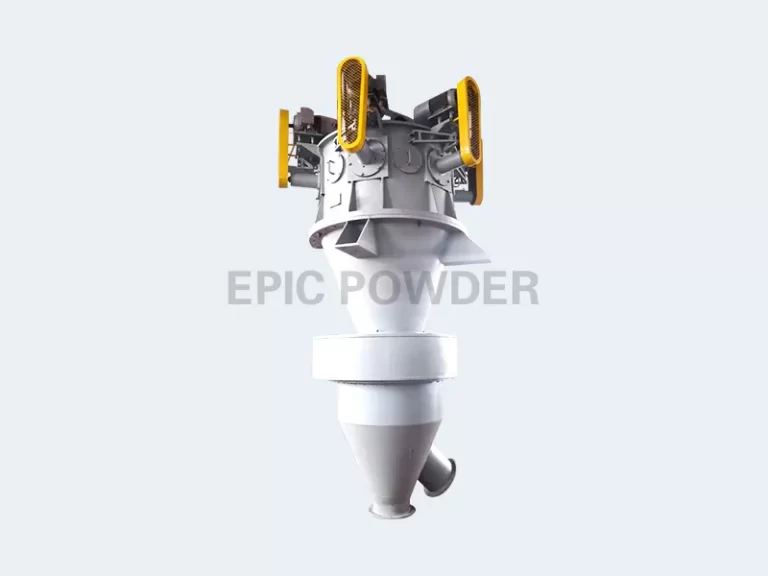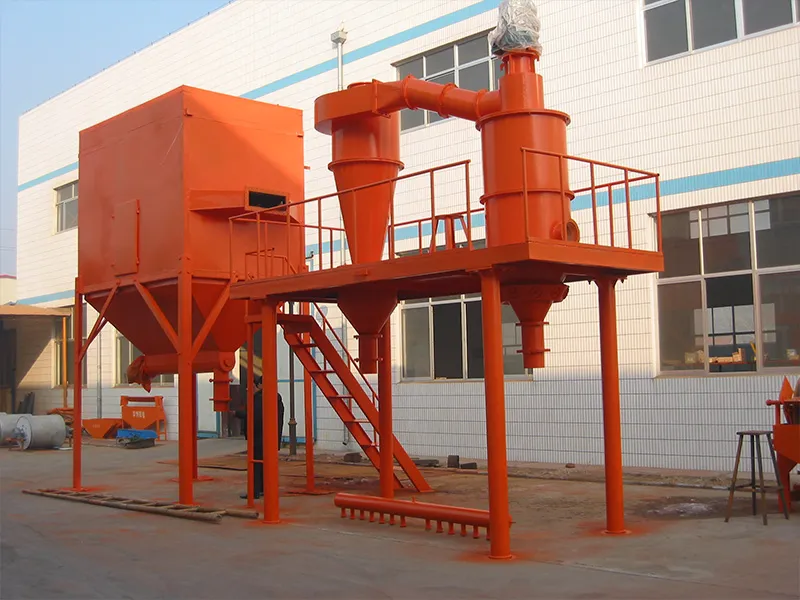For the dry classification of ceramic powders at the micron level, this is a critical process step in industries such as ceramics, electronics, and refractories. Selecting the right equipment is essential for improving product purity, controlling particle size distribution, and enhancing final product performance. The core principle of dry classification is to separate particles of different sizes. It’s by leveraging differences in the forces they experience in an air stream. The forces include centrifugal force, drag force, and gravity.

Air Classifiers: The Mainstream Solution
Air classifiers are currently the most commonly used equipment for micron-level dry classification, especially when targeting particle sizes with D97 values ranging from 3 to 150 microns. In operation, material is fed into a classification chamber through a precise feeding system. Inside, a high-speed rotating classifier wheel generates strong centrifugal force. At the same time, an inward drag force from the air flow acts on the particles. Fine particles, smaller than the defined cut point, overcome the centrifugal force and travel toward the center of the classifier wheel, where they are collected as the fine powder product. Meanwhile, coarser particles are pushed outward by the centrifugal force, hitting the chamber wall and falling down to be discharged as coarse powder.

The advantages of air classifiers underscore their widespread use:
• High Precision and Sharpness: They achieve sharp separation, resulting in a narrow particle size distribution.
• No Media Contamination: As a purely physical classification process with air, it prevents contamination — a key requirement when processing high-purity ceramic powders such as alumina, zirconia, and silicon nitride.
• Large Processing Capacity: Capable of continuous, automated production with flexible throughput.
• Adjustability: The cut point can be easily changed by adjusting the classifier wheel speed and air volume.
There are two common types:
• Vertical Single/Multi-Wheel Classifier: The most prevalent type, equipped with one or multiple classifier wheels in series, allowing simultaneous production of multiple particle size fractions.
• Horizontal Classifier: Features a horizontally oriented classifier wheel and offers higher classification sharpness, making it ideal for ultra-fine classifications (D97 between 2 and 10 microns).
Turbine Air Classifiers: Precision Cutting-Edge Technology
Turbine air classifiers represent the state-of-the-art in dry ceramic powders classification technology. The high-speed rotating turbine (classifier wheel) is their core feature, enabling precision separation at the micron scale. This format best embodies modern classification capabilities required for advanced ceramic powder processing.

Key Factors in Equipment Selection
Selecting the right dry classification equipment depends on several critical considerations:
• Target Particle Size (D97, D50): The primary criterion that determines the most suitable classifier model and range.
• Material Characteristics:
• Hardness: Materials like alumina and silicon carbide require equipment with highly wear-resistant linings and rotors, often ceramic or polyurethane.
• Density: Influences particle settling velocity and impacts where the cut point should be set.
• Stickiness/Moisture Content: Dry classification requires materials with very low moisture content (<1%) to avoid adhesion and clogging.
• Electrostatic Properties: Some powders develop static charge, so grounding and anti-static design features become necessary.
• Capacity Needs: Equipment ranges widely from small laboratory-scale units handling a few kilograms per hour to large industrial systems processing tons per hour.
• Product Purity Requirements: For ultra-high purity ceramic powders used in electronics, full ceramic linings or dust-free designs are critical to prevent contamination with metals.
The Recommended Solution: Turbine Air Classifier
For achieving precision micron-level classification while meeting the stringent demands of ceramic powder production, turbine air classifiers are the industry standard. They integrate seamlessly with upstream dry grinding equipment, such as jet mills or mechanical mills, forming a highly efficient grinding-classification closed loop. This loop continuously recycles coarse powder back for re-grinding, optimizing throughput and product quality.
Before finalizing equipment choices, it is highly advisable to submit material samples to the supplier for testing. This test phase is crucial to validate the classification performance, refine operational parameters such as air volume, wheel speed, and feed rate, and ensure a successful investment.
Epic Powder Machinery
Achieving exact micron-level classification is essential for producing high-performance ceramic powders. With over two decades of experience, Epic Powder Machinery specializes in delivering advanced powder processing solutions tailored to your needs. Our air classifiers are engineered for precision, efficiency, and contamination-free operation, addressing the challenges posed by demanding materials like alumina, zirconia, and silicon nitride.
Contact Epic Powder Machinery today for a consultation to discuss your project requirements.

